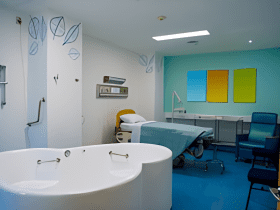

What is better: modern gender prediction tests or traditional tests?
Modern type of diagnostic tests to identify the gender of the unborn baby uses highly sophisticated and more advance technology. Most of these may require the mother to undergo certain measures before the procedure. One of the most common modern tests is the ultrasonography. This diagnostic tool uses sound waves and reflects a clear image of the fetus in the monitor. Amniocentesis is a procedure that aspirates amniotic fluid in the amniotic sac for diagnosing fetal condition. It is also used to determine the gender of the fetus. CVS sampling is also used if in some case that the Amniocentesis may provide a direct confirmation of the underlying health condition of the baby.
Traditional type of tests uses to determine the sex of the unborn baby is mainly beliefs and usual practices of the elders. The most common type is the Old Wives Tales wherein there are series of questions pertaining to the way a pregnant woman carries her pregnancy state. It also includes the use of Chinese calendar and Calculator which is based on the studies of numerologists and astrologists in china. These traditional practices are usually observed by people far from advance and modern civilization as gender predictor.
The reliability of modern tests
It is without a doubt that the percentage of identifying the gender of unborn baby using these techniques is highly supported with studies and researches. However, there are factors that can affect the evaluation process. Most of these are part of the human error. This may include the experience of the person who is involved in performing the procedure. It is also affected by the fetal factors which include the position of the baby. This is partly encountered when using ultrasonography as the medium for identifying the gender of the baby.
The miscarriage risks of modern tests
Ultrasonography
Based on the current reports, there are few cases of clients who suffered from mild complications due to persistent series of ultrasound evaluation. Most probably it is because of the sound waves that affects the organ development of the fetus. However, this scenario is still being studied in order to provide a confirming statement regarding the issue. In the recent time, there are no severe prenatal ultrasound risks that have been noted except for the negligence issue. This pertains to the inability of the ultrasound technician to provide safety precautionary measures to the client. Since, a client who undergoes this procedure is placed on the examination table; the need for safety such as side rails must be raised. This is to prevent the client from falling out of the table accidentally.
Amniocentesis
Many women are terrified of amniocentesis risk because it carries a small chance of causing a miscarriage. The needle used in the examination might cause infection to the client and her fetus. However, based on the current survey the miscarriage risks after the amniocentesis is around 0.5% to 1%. In other words, there is 1 possible person out of 200 clients have the risk of losing their unborn baby because of this examination. Last 2006, a study was noted that the real added risk for losing their unborn baby right after this procedure might only be around 0.06% which is equivalent to 1 possible client out of 1,600 people who undergone the same procedure.
Chorionic Villi Sampling
This procedure is done by inserting a slender needle using the transabdominal approach (through the abdomen deirectly into the placenta) or by using a very thin plastic tube that is inserted using transcervical approach (from vagina through the cervix directly into the placenta). This can precisely identify most of the fetal abnormalities which also includes paternity. However, this examination is not used to identify any neural tube defects such as spina bifida and other related abnormalities. However, this test is more comprehensive compare to amniocentesis in terms of providing results.
The chances of losing the unborn baby are the same with the current census of amniocentesis. Since it uses needles and considered as an invasive procedure, the opportunity of having an infection is very high. This can lead to maternal and fetal problems causing miscarriages. The cvs risk for miscarriage depends on the extent of the severity of infection. Once the infection takes in, and appropriate medical treatment is not given immediately then losing the baby is increased.
The final verdict
Any procedures done to the person can provide any underlying risks. It is either non-invasive or invasive procedure as long as it is done improperly then it can cause complications to the client. The importance of informing the clients about the test and its outcome can help them weigh the advantages and disadvantages of the gender prediction tests.










Leave a Reply
View Comments